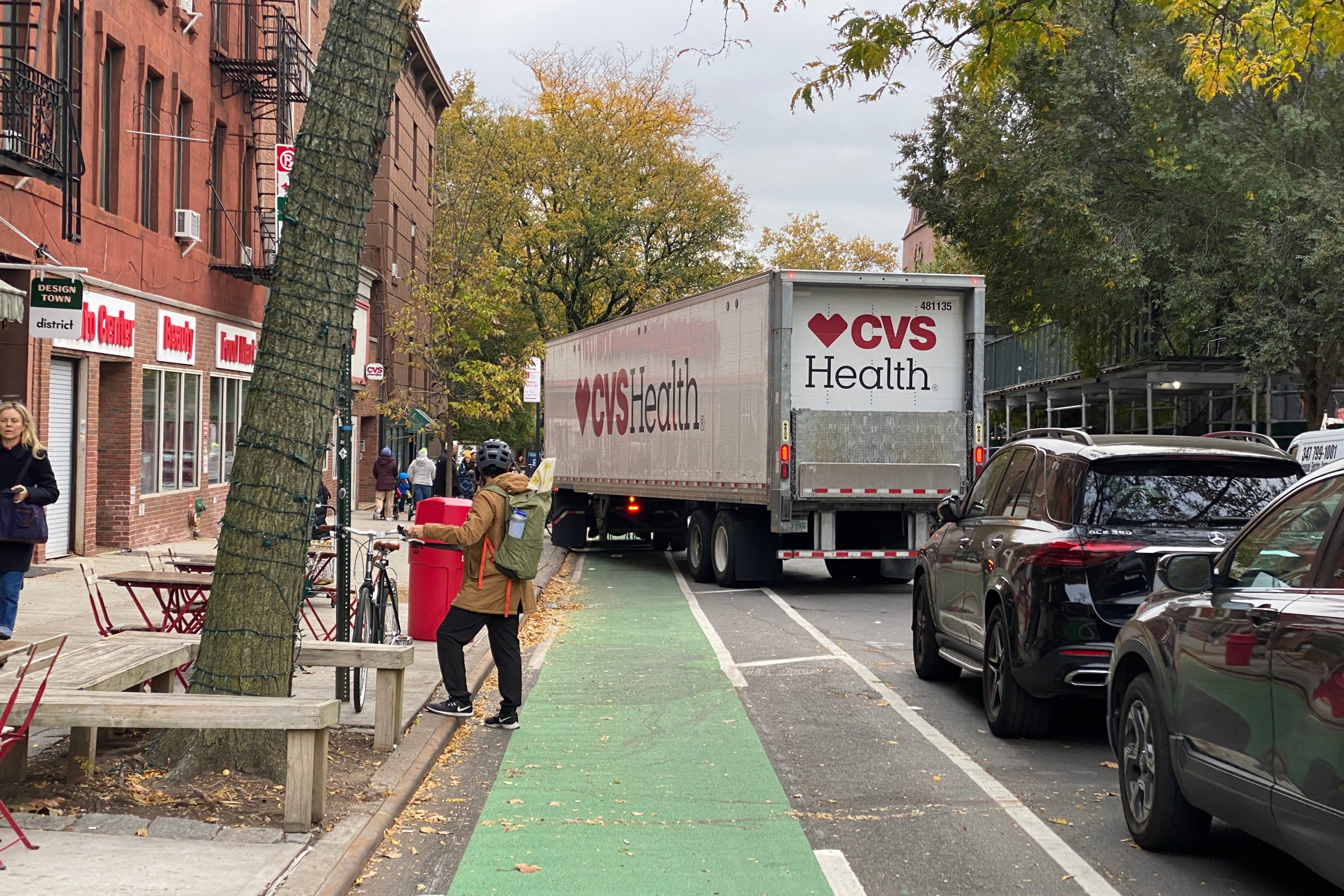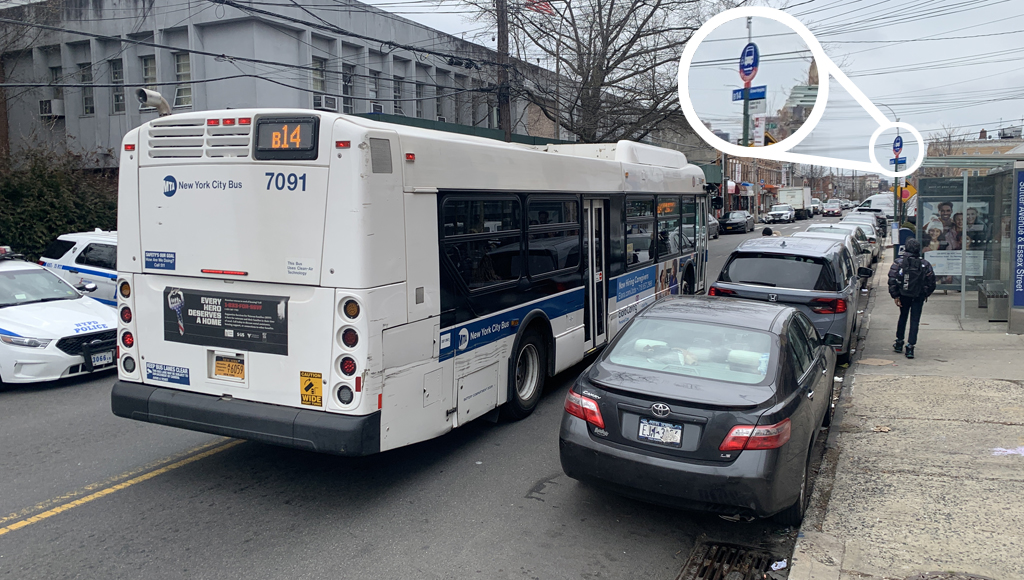New York City Mayor Michael Bloomberg, DOT Commissioner Janette Sadik-Khan, and leaders from the Midtown business community announced this morning that the new public spaces along Broadway will become permanent features of the city's landscape now that an eight-month trial period has ended. The city will seek to build on the trial project's success by creating, in the mayor's words, "an enduring, world-class" street in the heart of Manhattan.
After weighing a dramatic decline in traffic injuries and data from millions of taxi trips showing an average seven percent increase in west Midtown traffic speeds, Bloomberg characterized the results of the trial as very encouraging. Safety improvements alone, he noted, were "reason enough to make this permanent."
In a rather extraordinary Q&A session that followed the announcement, Bloomberg fended off several questions from reporters who expressed skepticism that overall traffic speeds had improved. The mayor did not shy from the chance to frame pedestrian, bicycle and transit improvements in a way that New Yorkers rarely hear from their elected officials.
“Are the roads for multiple uses -- everybody, pedestrians, bicyclists, and motorists,” he asked, “or are they just for motorists?” When it comes to streets that safely serve all users and create vibrant public spaces, he suggested, New York has fallen behind its competitor cities around the globe.
Data from the trial period [PDF] indicates that the changes in Midtown are helping NYC to catch up. Pedestrian injuries along the project corridor declined 35 percent compared to average injury levels from 2006 through 2008. The safety improvements were most dramatic at the major pedestrian plazas in Times Square and Herald Square, where injuries dropped by 40 percent and 53 percent, even as more people walked to those destinations.
 Photo: NYCDOT
Photo: NYCDOTWith more space to walk and socialize and fewer pedestrian conflicts with streams of traffic, public opinion of the area has swung upwards by a large margin. Surveys conducted by the Times Square Alliance revealed that 74 percent of people who work in the area today are satisfied with the experience of Times Square, compared to 43 percent in 2007. Three-to-one majorities of respondents -- both New Yorkers and suburbanites -- said they wanted the changes to be made permanent.
The transformation was aptly summed up by Dan Biederman, director of the 34th Street Partnership. "This is a 21st century idea," he said. "The 20th century idea was three lanes of noisy, annoying traffic."
Sadik-Khan, who called the observed improvements "an example of the results we want to deliver on the streets of New York citywide," said DOT would "move immediately to transform the plazas into iconic spaces worthy of their iconic setting." The permanent design of the plazas will incorporate new pavements, new seating, and event spaces.
As for those traffic speeds, the principal source of doubt had to do with methodology. DOT compiled one dataset by hiring drivers to travel straight on a selection of streets, using their own judgment to mimic the average speed of traffic. The hired drivers performed 5,723 time runs using this method.
A separate dataset came from millions of taxi trips tracked with GPS units, recording trip lengths and times to determine average speeds. The GPS data depicted faster travel times in every direction except southbound traffic, while the hired drivers produced more ambiguous results. Bloomberg expressed much greater confidence in the GPS data, which, he said, provided a huge sample size and reflected the real-world, zig-zagging complexity of traffic.
At one point, the prevalence of reporters’ questions about traffic prompted Times Square Alliance president Tim Tompkins to step up to the microphone. "I just want to say that the overwhelming majority of people who come to Times Square are not driving,” he said.
The new Broadway has succeeded because it functions much better for that supermajority of walkers and transit-riders. And don’t think other neighborhoods haven’t noticed. “There are other parts of the city where we are getting lots of calls from merchants who want the same kind of thing,” Bloomberg said. The widespread embrace of the historic re-purposing of Broadway, he later added, “gives you confidence in Janette’s innovation. It’s also building acceptance among the public, when they see that something new has worked.”
Video: Robin Urban Smith





